How to Plant a Raised Garden Bed
- January 9, 2024
- 0 comment
Starting a raised garden bed is like creating your small garden at home. Think about picking veggies or blooms close by. These beds make gardening straightforward, giving you control over soil and better growth. Let’s avoid common mistakes and keep it simple. From finding the right spot to choosing good materials, let’s make your garden easy to care for. Ready to get started and enjoy the harvest?

List of Guides on How to Plant a Raised Garden Bed
- Selecting the Right Location
- Water Source Considerations
- Size Matters
- Choosing Suitable Materials
- Selecting the Right Soil
- Plant Size and Selection
- Mulching
- Protection from Wildlife
Step-by-Step Instructions:
Step 1: Selecting the Right Location
Choosing the perfect location for your raised garden bed is the foundation of a successful harvest. Start by ensuring your raised bed gets a minimum of six hours of direct sunlight daily, a crucial factor for plant growth. When scouting a spot during early spring, anticipate how the surrounding trees will cast shade in the upcoming summer months. Think about where the shadows will fall and aim for a location that minimizes shade during the prime growing season.
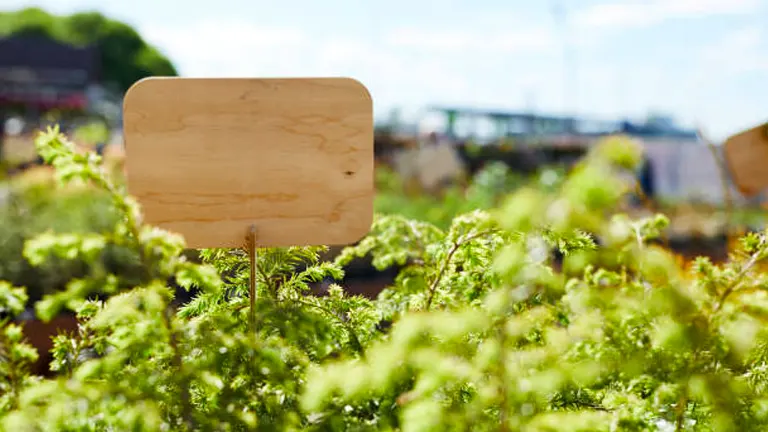
Opt for a relatively flat area to facilitate easy maintenance and accessibility. Steer clear of low-lying zones, especially at the bottom of hills, to avoid water accumulation issues. Additionally, resist the temptation to place beds against fences or walls, as this hinders access to all four sides and can make gardening tasks more cumbersome.
Additional Tips:
- Consider Microclimates: Evaluate microclimates within your garden space, as certain areas may have unique temperature or moisture conditions.
- Test Soil Drainage: Before finalizing your location, test the soil drainage to prevent waterlogged beds. Well-draining soil is essential for plant health.
- Observe Wind Patterns: Take note of prevailing wind patterns to protect delicate plants and ensure proper air circulation.
- Plan for Future Growth: Anticipate the growth of surrounding trees or shrubs and choose a location that accommodates their development without overshadowing your garden.
Step 2: Water Source Considerations
Ensuring a convenient and consistent water supply is essential for the success of your raised garden bed. While initially placing the bed near an outdoor faucet is a practical choice, it is equally important to assess the overall practicality of the location. Even if the back of your yard seems like a logical choice, it may not be ideal if it necessitates carrying buckets of water for maintenance. Verify that the bed is not only in proximity to an outdoor faucet but also reachable with a garden hose, eliminating the need for strenuous watering tasks.
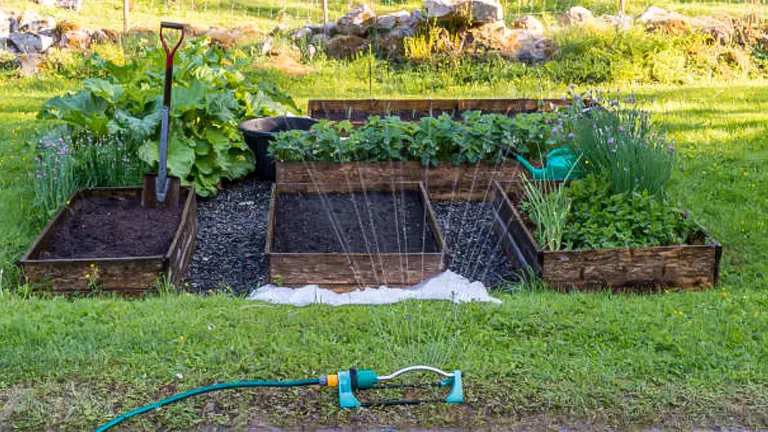
Enhance your watering efficiency by considering the installation of a drip irrigation system. This method not only streamlines the watering process but also ensures uniform moisture levels, fostering healthier plant growth while minimizing water wastage.
Additional Tips:
- Check Water Pressure: Verify adequate water pressure at the chosen location to guarantee efficient watering through hoses or irrigation systems.
- Use Soaker Hoses: For a cost-effective alternative to drip irrigation, consider using soaker hoses that deliver water directly to the soil around plants.
- Implement Rain Barrels: Harvest rainwater by incorporating rain barrels into your setup, providing an eco-friendly water source during dry spells.
- Monitor Soil Moisture: Invest in soil moisture sensors to gauge the water needs of your raised bed accurately.
Step 3: Size Matters
When establishing a successful raised bed garden, the size of the bed is a crucial factor. While the appeal of a large plot is understandable, prioritizing practicality is essential for a smooth gardening experience. Ideal bed dimensions typically fall within the 3 to 5 feet width range, ensuring convenient access from all sides. This size, commonly found in pre-made kits, strikes a balance between maximizing space efficiency and maintaining manageability.

To mitigate potential challenges, it is essential to carefully consider the logistics of your gardening activities. Choosing a narrower bed allows for comfortable access to the center for tasks such as planting, weeding, watering, and harvesting, without the need for awkward stretching or straining. Avoid the temptation to elongate the bed excessively, as this can lead to a cumbersome journey around the plot.
If your available space allows, a strategic solution involves creating multiple smaller raised beds. This not only improves accessibility but also facilitates a more organized and diverse gardening approach.
Additional Tips:
- Account for Arm’s Reach: Design the bed width based on your arm’s reach to facilitate easy maintenance without overextending.
- Utilize Companion Planting: Plan the layout to incorporate companion planting, optimizing space and fostering plant synergies.
- Implement Vertical Gardening: Integrate vertical gardening techniques for crops like beans or tomatoes to maximize space utilization.
- Use Removable Trellises: Employ removable trellises for climbing plants, providing additional growing space and ease of maintenance.
Step 4: Choosing Suitable Materials
Choosing the right materials for your raised bed is crucial to ensure its durability and keep your soil safe. While pressure-treated lumber might seem sturdy for a DIY project, it’s often avoided due to worries about harmful chemicals leaching into the soil similar concerns apply to old tires. Additionally, avoid using wood that easily decays or looks worn, such as pallet wood, as this may require rebuilding within a year.

Instead, go for sturdy, long-lasting materials that won’t jeopardize your garden’s well-being. Cedar, oak, redwood, stones, and bricks are excellent choices, providing a chemical-free and durable foundation for your raised bed.
Additional Tips:
- Use Food-Safe Sealants: If you opt for wooden materials, use food-safe sealants to further protect the wood and prevent any potential leaching.
- Consider Composite Materials: Explore composite materials as an alternative, combining durability with eco-friendly attributes.
- Check for Sustainability: Prioritize materials with sustainable sourcing and eco-friendly certifications to reduce environmental impact.
- Inspect Salvaged Materials: If considering reclaimed materials, thoroughly inspect for any potential contaminants or issues before use.
Step 5: Selecting the Right Soil
Selecting the right soil is crucial for the success of your raised bed, and it goes beyond simply choosing a bag labeled “garden soil.” While garden soil is meant to be mixed with in-ground topsoil to improve texture and nutrient composition, it’s not the best choice for raised beds. When used in raised beds, regular garden soil can become compacted, causing drainage issues and hindering optimal plant growth.
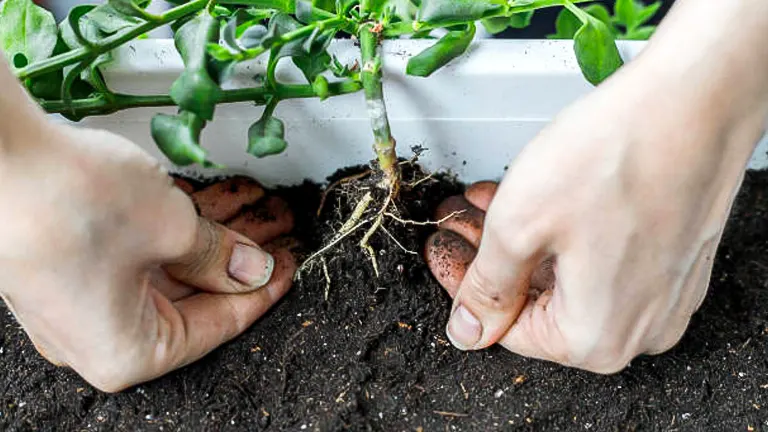
For a flourishing garden, choose bagged soil specifically designed for raised beds. This specialized soil not only prevents compaction but is also sterilized, eliminating the risk of weed seeds, insects, or diseases affecting your garden.
Additional Tips:
- Mix in Organic Matter: Enhance the raised bed soil by incorporating organic matter like compost to improve its structure and nutrient content.
- Regularly Amend Soil: Periodically amend the soil with organic fertilizers or compost to replenish nutrients and maintain optimal growing conditions.
- Test Soil pH: Check and adjust the pH level of the soil to match the specific needs of the plants you intend to grow.
- Consider Mulching: Apply a layer of mulch on the soil surface to retain moisture, suppress weeds, and regulate soil temperature.
Step 6: Plant Size and Selection
When planning your raised bed garden, it’s crucial to think about not only the current size of your plants but also how big they’ll get in the future. This forward-thinking approach ensures there’s enough room for variety and prevents overcrowding. For example, starting with a single zucchini in a two-foot square plot might seem manageable initially, but as it grows, it could take over the entire space.
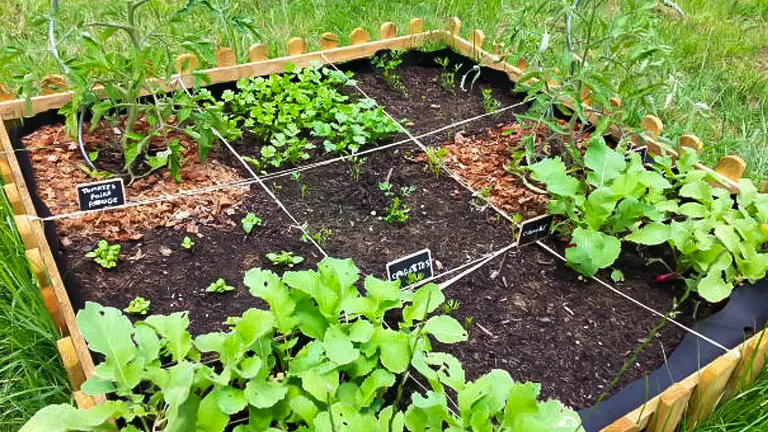
If you’re working with limited space, making thoughtful choices becomes essential. Select smaller vegetables or dwarf varieties that fit well in confined areas. Embrace the idea of succession planting, where you plant a new crop right after the previous one matures, ensuring a continuous and staggered harvest.
Additional Tips:
- Utilize Vertical Space: Incorporate vertical gardening techniques for climbing plants, maximizing space utilization.
- Companion Planting: Pair plants that complement each other to optimize space and enhance overall garden health.
- Consider Plant Spacing: Follow recommended spacing guidelines to prevent overcrowding and facilitate proper air circulation.
- Rotate Crops: Practice crop rotation to prevent soil-borne diseases and promote nutrient balance.
Step 7: Mulching
Although your raised garden is elevated, it still faces the challenge of weeds. To address this, it’s crucial to include a layer of mulch. Apart from controlling weeds, mulch plays a vital role in keeping your produce clean. It acts as a barrier, preventing rain from splashing soil onto your plants during bad weather.

The benefits of mulching go beyond just managing weeds. It greatly helps in retaining moisture around your plants’ roots, reducing the need for frequent watering. This not only saves water but also fosters a healthier and more sustainable environment for your garden.
Additional Tips:
- Choose Organic Mulch: Opt for organic mulch materials like straw, wood chips, or compost, providing additional nutrients to the soil as they decompose.
- Maintain Proper Mulch Depth: Apply a sufficient but not excessive layer of mulch (around 2-4 inches) to balance weed suppression and moisture retention.
- Avoid Mulch Contact with Stems: Keep mulch a few inches away from plant stems to prevent moisture-related diseases and encourage proper air circulation.
- Refresh Mulch Regularly: Periodically replenish the mulch layer to ensure its effectiveness and appearance over time.
Step 8: Securing Your Space
Although a raised bed may keep rabbits away, it might unintentionally expose your tempting produce at eye level for hungry deer. To protect your garden, the most effective approach is to install fencing that allows easy access for maintenance. Choose fences that can be easily reached over or removed when necessary.
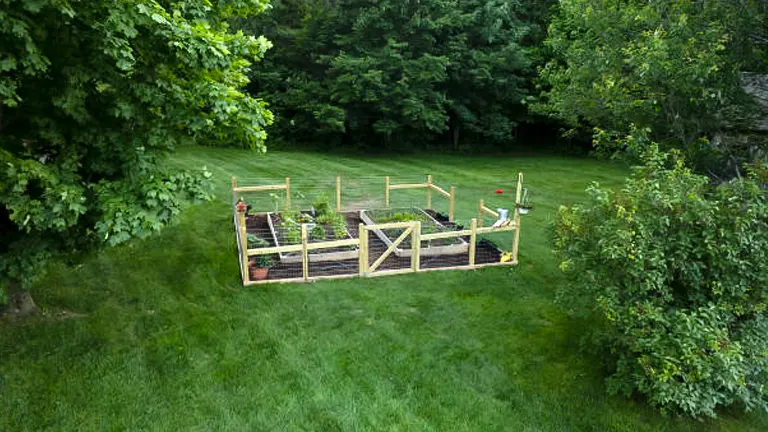
For an extra layer of defense, contemplate using odor-based repellents, particularly if deer or other wildlife continue to be a concern. Keep in mind that these repellents need regular reapplication to ensure they remain effective.
Additional Tips:
- Choose Sturdy Fencing: Opt for sturdy fencing materials to withstand potential challenges posed by larger wildlife, ensuring the durability of your protective barrier.
- Install Motion-Activated Devices: Enhance wildlife deterrence by installing motion-activated devices, such as sprinklers or lights, to startle and discourage intruders.
- Rotate Repellents: If using odor-based repellents, consider rotating between different types to prevent wildlife from acclimating and becoming immune to a specific scent.
- Regularly Inspect Fencing: Periodically inspect your fencing for any damages or vulnerabilities, ensuring it remains an effective barrier against wildlife.
By adhering to these guidelines and avoiding common mistakes, gardeners can enhance the success of their raised bed gardens, ensuring optimal growing conditions for a variety of plants.
Factors to Consider When Planting a Raised Garden Bed
- Location: The first factor to consider when planting a raised garden bed is the location. Choose a spot that receives at least 6 hours of sunlight a day and is easily accessible for watering and maintenance.
- Soil: The quality of the soil is essential for the success of your raised garden bed. Use a quality soil mix that is rich in nutrients and has good drainage. You can also supplement the soil with compost or other organic matter to enrich it further.
- Size: The size of your raised garden bed will depend on the amount of space you have available and the type of plants you want to grow. Larger beds are more productive but require more maintenance, while smaller beds are easier to manage but may not yield as much produce.
- Watering: Adequate watering is crucial for the success of your raised garden bed. Install a drip irrigation system or use a watering can to ensure that your plants receive enough water.
- Plant Selection: When choosing plants for your raised garden bed, consider the amount of sunlight they require, the soil type they prefer, and their growth habits. Some plants, such as tomatoes and peppers, require staking or support, while others, such as herbs and lettuces, can be grown in smaller spaces.
- Pest Control: Raising your garden bed above ground can help reduce pest problems, but you still need to be vigilant about controlling pests. Keep an eye out for common garden pests like aphids, slugs, and caterpillars, and use natural pest control methods whenever possible.
- Maintenance: Finally, maintaining your raised garden bed involves regular watering, pruning, and fertilizing. You may also need to replace the soil or add organic matter periodically. With proper maintenance, your raised garden bed can provide you with fresh produce for years to come.
Safety Tips When Planting a Raised Garden Bed
- Protect Your Skin: Gardening can expose you to the harmful effects of the sun’s UV rays. Protect your skin by wearing a wide-brimmed hat, long sleeves, and applying sunscreen. It’s also a good idea to wear gloves to protect your hands from cuts, blisters, and exposure to chemicals.
- Use Proper Tools: Using the right gardening tools can help prevent injuries. Use sharp and well-maintained tools to reduce the risk of accidents. Make sure to use tools that are appropriate for your size and strength. For example, if you are a petite person, a heavy shovel may not be the best tool for you.
- Watch Your Back: Gardening can put a strain on your back and muscles. To avoid back pain, lift with your legs, not your back, and use a wheelbarrow or trolley to move heavy objects. Take regular breaks to stretch or change positions to avoid muscle strain.
- Avoid Toxic Chemicals: When using chemicals in your garden, always read and follow the safety instructions on the label. Wear protective clothing and gloves when handling chemicals, and avoid using them on windy days to prevent inhalation. Be sure to store chemicals in a safe and secure location, away from children and pets.
- Be Careful with Water: Watering your garden can be hazardous if not done carefully. Use a hose that is certified for drinking water, and make sure it is properly connected to avoid leaks and accidents. Avoid using a sprinkler system that can create slippery and muddy surfaces, increasing the risk of falls.
- Mind Your Surroundings: Be aware of your surroundings when gardening. Look out for tripping hazards such as hoses, tools, rocks, and roots. Keep pathways clear and well-lit to avoid accidents. Also, be aware of any nearby electrical wires and avoid digging near them.
- Communicate with Others: If you have a large garden, it’s essential to communicate with others who may be working with you. Set clear boundaries, and make sure everyone knows where they are. Have a first aid kit nearby, and know where the nearest hospital or medical center is in case of an emergency.
Conclusion
In summary, planting a raised garden bed is a fulfilling journey filled with vibrant colors, delightful flavors, and the joy of nurturing life. Your choices, from sunlight and soil to plants and safety measures, contribute to the unique beauty of your garden. Whether positioning your bed strategically or selecting materials carefully, the process combines practicality and creativity. By prioritizing safety and employing thoughtful techniques, you create a nurturing and pleasant environment for both yourself and your plants. As you witness the literal and figurative fruits of your labor, the raised garden bed transforms into more than a piece of land; it becomes a canvas where nature and human care come together. May your gardening adventure continue to blossom, bringing beauty from the synergy between your hands and the Earth.
FAQs
- How much sunlight does my raised garden bed need?
Your raised garden bed should ideally receive at least six hours of direct sunlight daily. Be mindful of seasonal changes and surrounding structures that might cast shadows on your garden. - Can I use any soil for my raised bed?
While generic garden soil may work for in-ground gardens, it’s advisable to use soil specifically designed for raised beds. This specialized soil promotes proper drainage and is sterilized to prevent weed seeds, insects, or diseases. - What materials are best for building a raised bed?
Opt for durable and chemical-free materials like cedar, oak, redwood, stones, or bricks. Avoid pressure-treated lumber due to potential chemical leaching into the soil. - How wide should I make my raised bed?
A width of 3 to 5 feet is ideal for most raised beds. This size allows easy access from all sides, facilitating planting, weeding, and harvesting without excessive stretching or inconvenience. - Can I plant large vegetables in a raised bed?
While tempting, it’s advisable to consider the mature size of plants. For space efficiency, choose smaller vegetables or dwarf varieties. Succession planting, where one crop follows another, ensures a continuous harvest. - Do I need to mulch a raised garden bed?
Yes, mulching is beneficial even for raised beds. It helps control weeds, retains moisture around plant roots, and prevents soil splashing onto your plants during rain. Choose organic mulch materials for added benefits. - How can I protect my raised bed from wildlife?
Install fencing around your raised bed to deter animals like deer or rabbits. Consider motion-activated devices or odor-based repellents. Regularly inspect fencing for damages to ensure continued protection. - What are essential safety tips for planting a raised garden bed?
Practice proper tool handling, use mindful lifting techniques to prevent strain, wear appropriate clothing and footwear, stay hydrated, be aware of allergens, opt for organic pest control, and ensure the structural integrity of your garden bed for a safe and enjoyable gardening experience.
In closing, planting a raised garden bed is all about creating your own colorful haven. From choosing sunlight wisely to picking the right materials, each decision shapes your unique garden. As you see your efforts bloom, may your raised bed be a happy space where nature and care meet. Happy gardening!

Benjamin Brooks
Forestry AuthorGreetings! I'm Benjamin Brooks, and my journey over the past 15 years has revolved around the fascinating realms of content creation, expertise in snow clearing, and the intricate world of lumberjacking and landscaping. What began as a simple curiosity about the natural world and heavy machinery has evolved into a passionate profession where my love for crafting words intertwines seamlessly with my lumberjacking and garden skills.

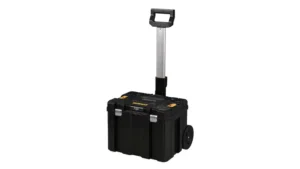
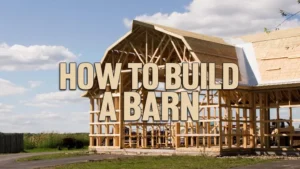
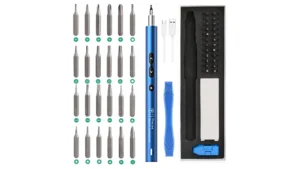
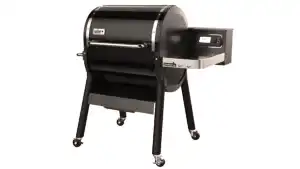

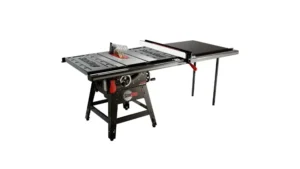





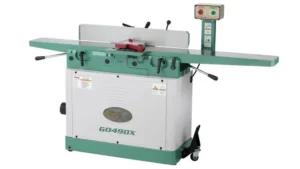
Leave your comment